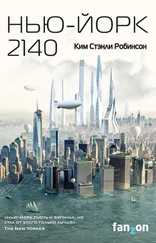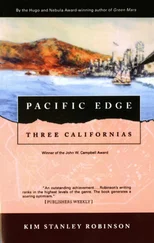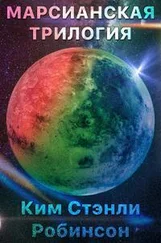On impact the two bodies first merged and then exploded violently outward, throwing a great splash of hot stone and metal in a liquid spray that surrounded the hot spinning mass remaining in the middle. The spray of fragments was cast into space in a doughnut-shaped band around the newly formed and now bigger planet, which had been set spinning so fast by the collision that each day took about five hours.
That big combined mass was Earth as we know it now. The melted fragments in their doughnut-shaped band, which planetologists now call a synestia, quickly (meaning in just a century or so) recollected and coalesced into our moon, a ball one-quarter the size of Earth, but only one-tenth its mass, because the material that had been thrown outward was made mostly of surface and mantle materials, lighter than core materials. Both Theia’s and Earth’s cores ended up inside Earth. The ball of recollected materials in space was the moon.
Luna. In China we usually call the tutelary spirit Chang’e, a great goddess. Sometimes Yu Nu. In the Greek myths, Selene. And Selene’s mother was Theia—thus the scientists’ name for the impactor planetesimal. This lost planet is in fact not lost, but rather a part of all of us. Theia’s atoms are in every body of every human.
In the four and a half billion years since that time, the moon’s and Earth’s gravitational influence on each other has caused Earth’s rotation to slow to twenty-four hours a day, while the moon is now tidally locked, and rotates on its axis in the same time it takes to complete an orbit around Earth. On they go in their spiral dance, and the tides caused by the tug of the moon on the Earth’s oceans had a huge impact on the development of life on Earth.
What to make of this story? Hard to believe! Vast, earth-shattering collisions, followed by billions of years of spiral dancing—these are what made the peaceful harmonious world we live on, and made also this dead white rock in space, this moon. One collision, but with two very different outcomes, almost entirely dependent on gravity and the other laws of physics. That’s something to ponder. Worlds in collision! And then different outcomes, including some very good ones.
Of course we would not want any such thing to happen again to us now! That would mean disaster. And the motions of the physical cosmos are not the same as the operations of human history. Not even close. Analogies always deceive more than they reveal; I am no fan of analogies, I do not use them. Even metaphor, that mental operation we use with almost every word we speak, is slippery and deceptive. I always speak as plainly as I can.
And yet language, and therefore thought, is a strange and imprecise game of metaphors and analogies, one that we must play to stay alive. So now I want to suggest that even if there is a Theia looming out there in the orbit of our collective history, spiraling in toward us—as perhaps there is—and even if it has already been dislodged from its Lagrange point and is now bearing down on us, such that it is about to collide with some already-existing Gaia inside us, as seems inevitable, gravity and inertia being what they are—this has happened before. And the results, no matter how catastrophic at first, can still eventually turn to the good.
CHAPTER THREE
taoguang yanghui
Keep a Low Profile (Deng)
Valerie Tong sometimes met for private conversations with her station chief, John Semple, in one of the Chinese base’s greenhouses. This one was located on the broad rise where the rims of Faustini and Shoemaker Craters met, on what John liked to call the Peak of Eighty-Four Percent Eternal Light. Here, when they were experiencing their brief night, which in fact lasted for about three days, the lunar farmers, most of them from Henan, used supplementary grow lamps hung close over their crops. The result was a giant room filled everywhere with splashes of glowing green.
All of the plants in this particular greenhouse were varieties of bamboo. Most greenhouses were devoted to agriculture; this one grew infrastructure. First they grew soil itself: lunar regolith, dead as a doornail, was mixed with carbon from carbonaceous chondritic meteorites, imported nitrates, inoculants, compost, and water, and thus grown to soil, the necessary first crop. In this soil they planted varieties of bamboo that had been engineered for growth so fast that grow lamps suspended over the plants had to be reeled up automatically to stay above the growth, which could be as much as a meter a day, and was always tilting toward the horizontal sunlight in ways that had to be compensated for with mirrors. When harvested, this bamboo became lunar lumber and fabric, used in all sorts of ways all over the settlements.
Thus it was that John liked to suggest to Valerie that they “go watch the grass grow.” Luna’s only entertainment, he liked to add. And actually it was kind of mesmerizing. Against the quiet background hum of the ventilators, it seemed that the rustle of the artificial breezes through the leaves was the actual sound of the plants growing. The bunched and spiky but gracefully splayed leaves added a rich palette of color to the big space, not just greens but also the deep reds that infused certain bamboos’ new shoots, also the range of browns that were created when red and green mixed. One glossy brown in which the red and green were both still somehow evident Valerie had looked up on a color chart, and found it was called madder alizarin. “On the moon you get hungry for this stuff,” John Semple noted, rubbing the color square with his finger, looking amused that Valerie had called it up.
This look of amusement Valerie was becoming all too familiar with, and in truth she didn’t like it. More and more John Semple was playing a game in which Valerie was the cultured Ivy League opera-loving bilingual finance expert with a stick up her butt, while he was the down-home blues brother sloping through a job he did offhandedly without even caring about it. These caricatures weren’t true in either direction, although the fact that John seemed to like making them did seem to indicate that he might indeed be somewhat lacking in taste. Beyond that it was just teasing, and she didn’t like being teased.
John Semple was a tall angular black man who had started his career in the Secret Service before moving to the State Department’s foreign service, and Valerie presumed also to some other intelligence agency, probably NSA or CIA. Valerie herself was Secret Service only, part of the president’s Special Investigative Unit. Here on the moon her cover was as one of John’s State Department translators. John knew what she was really up to, but seldom mentioned it. They had that Secret Service bond between them, and despite his teasing, he seemed to like her; and she found him useful. She didn’t like to get close to other agents.
They stood by a long tinted window and turned on what John called his cone of silence, which would keep their conversation private. The sun pricked the horizon and flooded the greenhouse with its tiny shard of light. It would take most of the day for it to creep fully over the nearby hill, but already John’s face glowed, a darker brown than madder alizarin, but just as rich and fine. He had mentioned once that he had Cherokee ancestry, making him, he said, a red man as well as a black man; and since Valerie’s parents were Chinese and Anglo-American, he went on, between them they had the old Sunday school hymn covered. She hadn’t known what he had meant by that, and so he had sung for her, in a jovial bass, “Red brown yellow black and white, we are precious in his sight, Jesus loves the little children of the world!” He had a deep laugh, and had laughed then to see Valerie’s rolled eyes. Of course the song’s lyric was a little racist in an old-fashioned way, but also, even worse, Valerie was one of those music lovers very susceptible to earworms, and now this stupid little tune would stick in her head for many hours, even days, and would come back unwelcomely for years to come. So no doubt she had rolled her eyes and frowned her frown, an expression she could feel freezing the muscles of her face; this happened a little more often than she would have liked.
Читать дальше
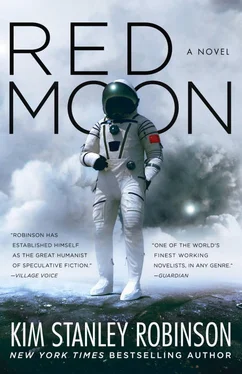
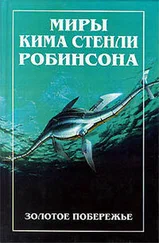
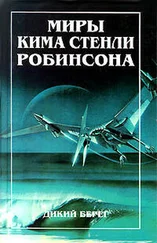


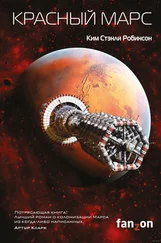
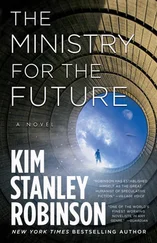
![Ким Робинсон - Годы риса и соли [litres]](/books/394367/kim-robinson-gody-risa-i-soli-litres-thumb.webp)
